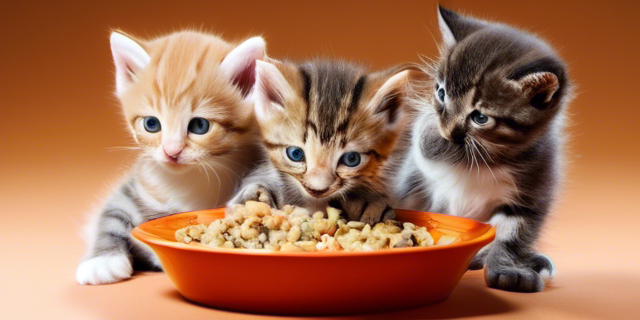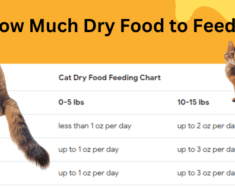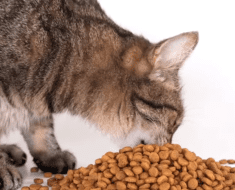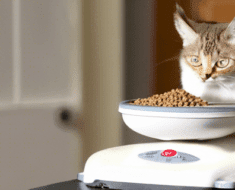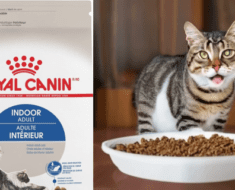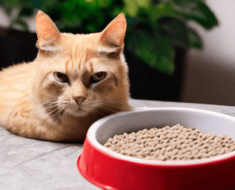A kitten can start eating dry food at around 8 weeks old when they have teeth. Introducing dry food to your kitten’s diet at the appropriate age is crucial for their growth and development.
Transitioning kittens to dry food should be done gradually to prevent digestive upsets. Consult with your veterinarian for guidance on the best timing and type of dry food suitable for your kitten’s specific needs. By providing a balanced diet that includes dry food, you can ensure your kitten receives essential nutrients for a healthy start in life.
Remember to always have fresh water available for your kitten to stay hydrated while consuming dry food. Gradually increasing the amount of dry food in their diet will help them adjust and thrive as they grow into healthy adult cats.
Understanding Kittens’ Nutritional Needs
Kittens can eat dry food when they are around 8-10 weeks old. It is crucial to provide them with proper nutrition during their formative age. Kittens’ nutritional needs change as they grow. Different developmental stages require specific nutrient ratios. Consult a veterinarian for tailored advice. Gradually introduce kitten food to avoid digestive issues. Ensure they have access to fresh water at all times. Monitor their weight and adjust portions according to their growth.
Transitioning To Dry Food
Kittens can typically start eating dry food around 4-6 weeks old, once they begin weaning. Gradually introducing dry food helps them adjust to the new texture and taste. Keep an eye on their digestion and ensure they have access to plenty of water as they make the transition.
| Introducing dry food gradually Kittens can start dry food around 8 weeks old. Start by mixing wet and dry food. Slowly increase the amount of dry food. It helps kittens digest the new food easily. |
| Choosing the right dry food Opt for high-quality dry ___ labeled for kittens. Check for essential nutrients and proteins. Ask your vet for recommendations for the best choice. |
Signs Of Readiness
Physical signs: When a kitten is ready for dry food, you may notice that they have all their teeth and can chew effectively. Their weight should be stable and they should be active and playful.
Behavioral cues: Signs of readiness for dry food can also include a kitten showing interest in the food and trying to eat from their mother or other sources.
When To Start The Transition
Transitioning your kitten to dry food requires careful consideration of several factors. First, you should take into account the feeding schedule when determining the optimal time to introduce dry food into their diet. Kittens typically start to eat solid food around four weeks of age, but continue to nurse until they are around eight weeks old. It’s crucial to provide a mix of wet and dry food at this stage to ensure they receive adequate nutrition. Consulting with a veterinarian is highly recommended before making any dietary changes for your kitten. They can provide valuable insights tailored to your kitten’s specific needs and help you establish an appropriate feeding schedule. Regular check-ups with your vet will also track your kitten’s growth and ensure they are meeting their nutritional requirements. Remember, a gradual transition is key when introducing dry food. Start by mixing small amounts with their wet food, gradually increasing the ratio over two to three weeks until they are consuming dry food exclusively. This approach will help your kitten adjust to the new diet and avoid any digestive upsets. Feeding your kitten an appropriate diet is essential for their overall health and development. By considering the feeding schedule and seeking guidance from a veterinarian, you can ensure a smooth transition to dry food for your growing feline companion.
Common Challenges And Solutions
Transitioning a kitten to dry food can be met with a few digestive issues. It’s not uncommon for kittens to have sensitive stomachs and experience upset digestion. Introduce the dry food gradually, starting by mixing it with wet food to aid in the transition. This will help prevent sudden changes in their diet, reducing the likelihood of digestive problems. Monitor your kitten’s bowel movements closely, and ensure they are regular and healthy. In case of any irregularities or persistent issues, consult with a veterinarian. Additionally, some kittens are fussy eaters and may refuse to eat dry food at first. In such cases, try offering different brands or flavors to find one that appeals to their taste. Remember to always provide fresh water alongside their dry food to aid in digestion and hydration.
Frequently Asked Questions Of When Can A Kitten Eat Dry Food
When Can I Start Dry Food For My Kitten?
You can start dry food for your kitten at around 8 weeks old as their main diet.
When Should I Switch My Kitten From Wet To Dry Food?
Transition your kitten from wet to dry food gradually at around four to six months for optimal digestion and nutrition. Offer a mix of both types initially, then slowly increase the dry food portion over a week or two to prevent any tummy issues.
Is It OK to Feed Kitten Just Dry Food?
Yes, it’s okay to feed kittens just dry food, but ensure it’s balanced and meets their nutritional needs. Gradually introduce it to avoid digestive issues, and always provide access to fresh water. Consider consulting a vet for personalized recommendations.
Can A 2-Month-Old Kitten Eat Dry Food?
Yes, a 2-month-old kitten can eat dry food. It is important to choose high-quality, kitten-specific dry food that is easy for them to chew and digest. Gradually introduce dry food alongside their mother’s milk or wet food to ensure a smooth transition.
Conclusion
Introducing dry food to your kitten is a gradual process. It’s important to consider their age, health, and individual eating habits. Providing a balanced diet is essential for their growth and development. Consult your veterinarian for guidance as your kitten transitions to dry food.
Making this change carefully will set your kitten up for a healthy future.
